
I think the post on Ideas in Food about a flexible white chocolate sheet paired with roe, was my first introduction to Aki Kamozawa & H. Alexander Talbot’s blog, and I have been an avid reader since, and eventual cookbook owner. I’m not sure how I came across their blog, I think it may have been a rainy weekend day trawling through websites, following links, bookmarking as I go.
Anyway, the idea of making white chocolate in flexible sheet form has been locked away for some time now, but never acted on, mainly as I haven’t had and locust bean gum or agar in the kitchen, well that, and I kind of forgot about it.

Locust bean gum (E410), is the milled endosperm of the seed of the carob tree, and comes as a whitish powder. It is used as a gelling and thickening agent, and in this use also works synergistically with the agar to add flexibility and strength, a lot more information of how these two work together along with a lot of other hydrocolloids can be found in the book Ideas in Food: Great Recipes and Why They Work by Aki Kamozawa and H. Alexander Talbot.
The other half’s birthday was coming up, and although she said she would be doing the cooking (yeah right), I wanted to make a special dessert for the occasion. Well any dessert is special as we hardly ever have it, don’t give me cake, give me bread with cheese and olives. I came across Hervé This and Heston Blumenthal’s Chocolate Chantilly recipe (see a young Heston—with hair—demonstrate on youtube), deceptively simple, melt chocolate in water, and whip. I really liked the idea of it showcasing the chocolate, and not muddling the flavour with the extra fat cream brings to a mousse.
There’s no better excuse than a birthday to be indulgent. I thought of the chocolate sheet, maybe I could combine the two in some sort of chocolate overdose? I set about re-reading the Ideas in Food cookbook. Taking notes and writing out ideas as they popped up (a cook's best friend is a notebook, write down ideas, recipes, and failures). I eventually came up with a chocolate treat that I thought would work, orange blossom dark chocolate chantilly wrapped in a cardamom scented white chocolate sheet with crumbled tuile.
Orange Blossom Dark Chocolate Chantilly
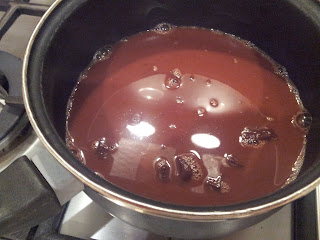
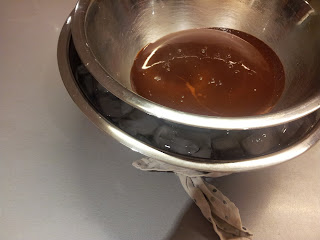
250 grams 70% Cocoa Chocolate
227 ml Water
1 teaspoon Orange Blossom Water
(Up to 4 tablespoons of sugar if you want it sweeter)
- Fill up a bowl with ice and a bit of water, and place another bowl on top of it.
- Melt the chocolate in the water of a medium heat.
- When melted stir in the orange blossom water.
- Pour the the chocolate into the iced bowl and whip with a whisk, be careful not to over whip it as it will become grainy, much like whipping cream.
- Let it firm up a little in the fridge, then pipe thick tubes of it onto a lined tray, and let it set in the fridge. It’s best to do this and the white chocolate sheet the night before.

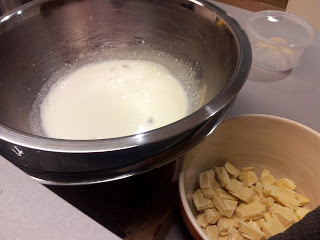

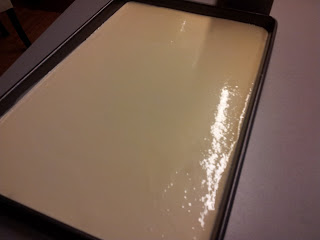
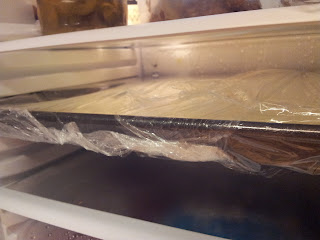
250 grams White Chocolate (chopped)
375 grams Milk (not trim please)
2.25 grams Agar
0.3 grams Locust Bean Gum
1 gram Cardamom Pods (cracked)
3 grams Fine Sea Salt
- Spray a sheet pan with some nonstick cooking spray.
- Prepare an ice bath the same as for the Chocolate Chantilly.
- Bring the milk and cardamom to a simmer, and remove from the heat, let it sit for 20 minutes.
- Strain the milk into the ice bath and let it cool.
- Transfer the mixture to a blender, and slowly turn up the speed until a vortex forms. Sprinkle in the Locust Bean Gum and Agar, blend for 30 seconds.
- Transfer the milk to a clean pan and simmer on a medium heat for 5 minutes, this hydrates the agar.
- Pour the milk into the blender and turn it on to a low speed. Slowly pour the chocolate in, be careful as it will splatter.
- When all of the chocolate has been incorporated, turn the speed up to medium and blend for 30 seconds.
- Pour the mixture onto the prepared sheet pan, it should set within 10 minutes, cover and place in the fridge for at least an hour.

You don’t need the tuile, and the main reason I used it was because I had made some a few days before when I was thinking of making something different, but not wanting to waste my efforts they were repurposed.
2 Egg whites
85 grams Flour
100 grams Icing Sugar
- Mix all of the ingredients to form a paste.
- Spread out on a lined cookie sheet pan, the thinner the better. I used a template cut from a plastic plate and a palette knife to make little round tuile.
- Cook at 180°C for 5 minutes or until golden.
- Remove from the oven, and if you want curved tuile shape them while warm.


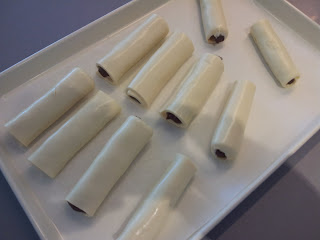
Cut the white chocolate sheet into rectangles, and sprinkle two thirds with some crumbled tuile. Place the chocolate chantilly on the other third and roll up, I used a piece of baking paper to help with this. Then sprinkle with some more tuile.
It’s a bit of an effort, it can be spread over a few days. But was it worth it? Absolutely!



